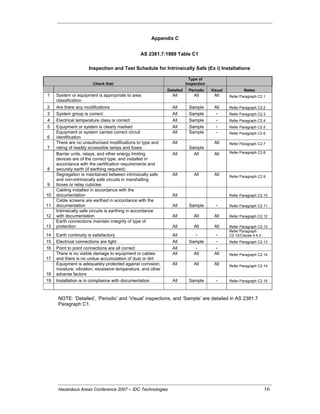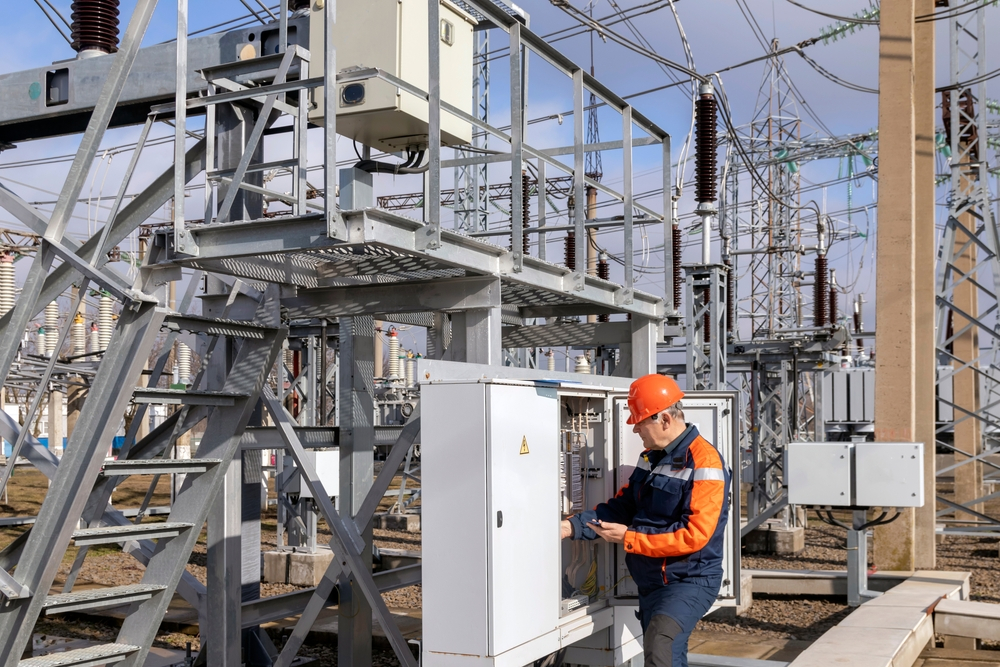Roar Solutions - Questions
Roar Solutions - Questions
Blog Article
Indicators on Roar Solutions You Should Know
Table of ContentsThe 8-Minute Rule for Roar SolutionsAll about Roar SolutionsSome Known Details About Roar Solutions
In order to shield setups from a potential surge a technique of analysing and identifying a potentially unsafe location is required. The function of this is to ensure the proper choice and installation of devices to ultimately protect against an explosion and to guarantee safety and security of life.
(https://www.quora.com/profile/Roarsolutions)
No equipment needs to be installed where the surface temperature of the equipment is more than the ignition temperature of the provided threat. Below are some typical dust unsafe and their minimal ignition temperature level. Coal Dust 380C 225C Polythene 420C (melts) Methyl Cellulose 420C 320C Starch 460C 435C Flour 490C 340C Sugar 490C 460C Grain Dust 510C 300C Phenolic Resin 530C > 450C Aluminium 590C > 450C PVC 700C > 450C Soot 810C 570C The possibility of the risk existing in a concentration high adequate to cause an ignition will certainly differ from place to area.
In order to classify this threat an installment is divided into locations of threat depending upon the amount of time the dangerous is present. These areas are referred to as Areas. For gases and vapours and dirts and fibers there are three zones. Zone 0 Zone 20 A dangerous atmosphere is highly most likely to be present and may be existing for lengthy periods of time (> 1000 hours per year) or even continually Area 1 Zone 21 A hazardous ambience is feasible but not likely to be existing for extended periods of time (> 10 450 C [842 F] A category of T6 suggests the minimum ignition temperature is > 85 C [185 F] Unsafe location electrical equipment possibly created for use in greater ambient temperatures. This would indicated on the ranking plate e.g. EExe II C T3 Ta + 60C( This means at 60C ambient T3 will certainly not be gone beyond) T1 T1, T2, T3, T4, T5, T6 T2 T2, T3, T4, T5, T6 T3 T3, T4, T5, T6 T4 T4, T5, T6 T5 T5, T6 T6 T6 A T Class score of T1 means the optimum surface temperature produced by the instrument at 40 C is 450 C. Presuming the associated T Course and Temperature level score for the devices are appropriate for the location, you can constantly use an instrument with an extra rigid Division score than required for the area. There isn't a clear response to this question regrettably. It really does depend upon the sort of equipment and what repair work require to be performed. Tools with specific examination treatments that can not be done in the area in order to achieve/maintain third event ranking. Have to return to the manufacturing facility if it is prior to the tools's solution. Area Repair By Authorised Worker: Difficult screening may not be called for however specific procedures may need to be adhered to in order for the tools to maintain its 3rd party ranking. Authorized workers need to be utilized to carry out the job correctly Repair need to be a like for like substitute. New component should be taken into consideration as a direct replacement needing no special screening of the devices after the repair is complete. Each item of equipment with an unsafe score need to be evaluated separately. These are detailed at a high level listed below, but also for more detailed info, please refer directly to the guidelines.
The 10-Second Trick For Roar Solutions
The equipment register is a thorough database of tools records that consists of a minimum set of fields to identify each product's location, technical criteria, Ex lover category, age, and environmental data. This details is important for monitoring and handling the devices properly within dangerous locations. In contrast, for regular or RBI tasting assessments, the grade will be a mix of Detailed and Close inspections. The proportion of Detailed to Close assessments will certainly be figured out by the Tools Risk, which is examined based upon ignition risk (the likelihood of a resource of ignition versus the chance of a flammable environment )and the unsafe location classification
( Zone 0, 1, or 2). This variation will certainly additionally influence the resourcing demands for job prep work. As soon as Lots are defined, you can establish tasting strategies based upon the sample size of each Lot, which refers to the variety of arbitrary devices things to be checked. To establish the required sample size, two aspects require to be reviewed: the size of the Great deal and the classification of examination, which shows the degree of initiative that should be applied( reduced, normal, or increased )to the evaluation of the Great deal. By integrating the category of evaluation with the Lot size, you can after that develop the ideal denial standards for an example, indicating the permitted number of defective items found within that example. For more details on this process, please describe the Energy Institute Guidelines. The IEC 60079 conventional suggests that the maximum period between inspections need to not go beyond three years. EEHA assessments will certainly also be performed beyond RBI projects as part of set up upkeep and devices overhauls or repairs. These inspections can be attributed toward the RBI example dimensions within the affected Whole lots. EEHA assessments are carried out to identify mistakes in electrical tools. A weighted racking up system is important, as a single tool might have several mistakes, each with varying levels of ignition danger. If the combined rating of both evaluations is much less than twice the mistake score, the Great deal is deemed appropriate. If the Whole lot is still taken into consideration unacceptable, it should undergo a complete assessment or validation, which might cause stricter examination protocols. Accepted Great deal: The sources of any kind of faults are determined. If an usual failure setting is found, added equipment might require examination and repair work. Mistakes are classified by extent( Security, Honesty, Home cleaning ), guaranteeing that immediate concerns are assessed and resolved promptly to alleviate any kind of effect on safety and security or operations. The EEHA database need to track and tape-record the lifecycle of faults along with the restorative activities taken. Applying a durable Risk-Based Inspection( RBI )technique is vital for guaranteeing conformity and safety and security in managing Electric Tools in Hazardous Locations( EEHA) (eeha certificate). Automated Fault Scoring and Lifecycle Administration: Effortlessly take care of mistakes and track their lifecycle to boost assessment precision. The introduction of this assistance for risk-based evaluation even more enhances Inspectivity's setting as a best-in-class option for regulative compliance, in addition to for any asset-centric evaluation use case. If you are interested in finding out more, we invite you to ask for a demo and uncover just how our option can transform your EEHA management processes.
What Does Roar Solutions Mean?

In terms of eruptive danger, a hazardous location is an atmosphere in which an eruptive ambience is present (or may Recommended Reading be anticipated to be present) in amounts that call for special precautions for the construction, installment and use equipment. high voltage courses. In this article we discover the obstacles dealt with in the work environment, the danger control procedures, and the needed proficiencies to work safely
It is a consequence of modern-day life that we produce, store or take care of an array of gases or liquids that are deemed combustible, and a variety of dusts that are considered combustible. These substances can, in certain problems, form eruptive environments and these can have major and unfortunate effects. A lot of us recognize with the fire triangle eliminate any kind of one of the three aspects and the fire can not occur, yet what does this mean in the context of dangerous locations? When breaking this down into its simplest terms it is basically: a mix of a particular amount of launch or leakage of a certain compound or product, blending with ambient oxygen, and the presence of a source of ignition.
In the majority of instances, we can do little about the levels of oxygen in the air, but we can have considerable influence on sources of ignition, as an example electrical devices. Harmful locations are recorded on the unsafe location category illustration and are determined on-site by the triangular "EX-SPOUSE" indicator. Below, among various other vital details, areas are divided into three types depending on the hazard, the likelihood and period that an eruptive ambience will certainly exist; Area 0 or 20 is considered the most dangerous and Zone 2 or 22 is deemed the least.
Report this page